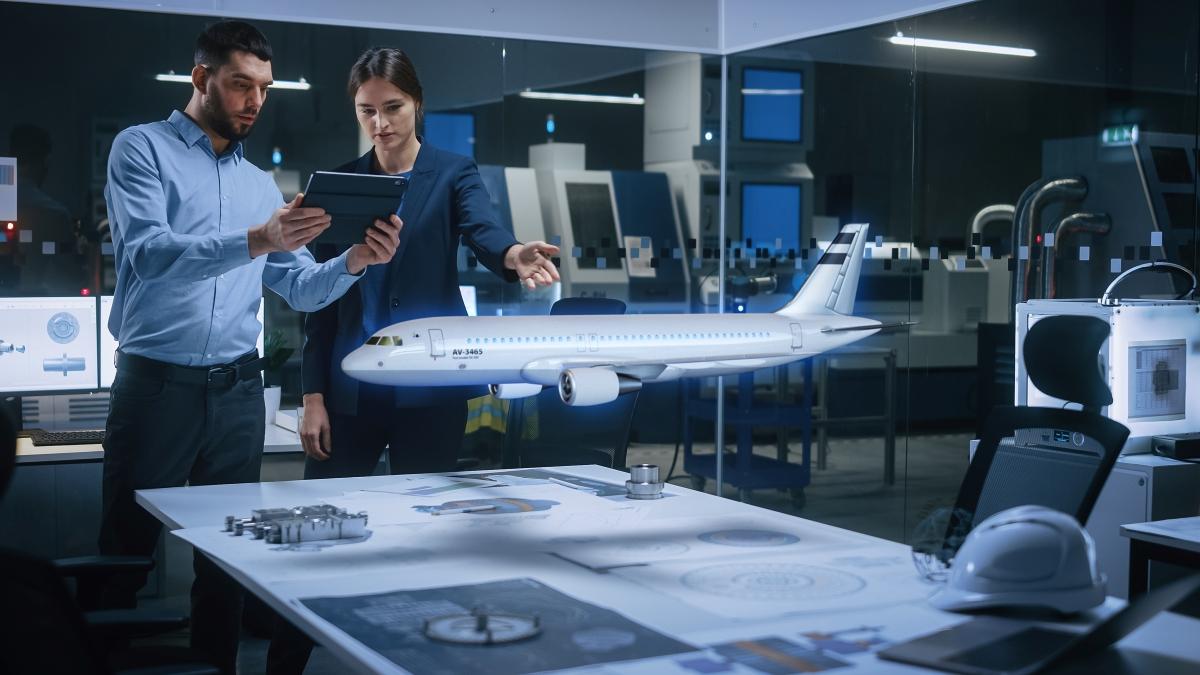The Strategic Evolution Of MRO Through Digitalization And AI

Maintenance, Repair, and Overhaul (MRO) is a pivotal sector in the aviation industry. Effective maintenance and repair of equipment are essential for ensuring operational continuity, safety, and cost-efficiency. The surge in air travel has resulted in more aircraft in the skies, leading to an increased need of MRO services to maintain these aircraft. Introducing new aircraft and advanced engines creates complex systems requiring specialized knowledge and advanced maintenance techniques. Moreover, several fleets are reaching the end of their service lives and need extensive upgrades or complete replacement, further straining existing maintenance resources. These factors collectively drive the industry's imperative to adopt advanced technologies, streamline operations, optimize resource utilization, and maintain high safety and efficiency standards.
Digital transformation
- Data-driven decision making: Digitalization has empowered MRO organizations to leverage extensive data generated by equipment sensors, maintenance logs, and operational systems. Analyzing this data yields crucial insights into equipment health, performance trends, and failure patterns. Digital tools such as IoT (Internet of Things) devices and advanced analytics platforms enable real-time monitoring and predictive analysis, allowing MRO teams to make swift, informed decisions.
- Enhanced asset management: Digital asset management systems have superseded traditional paper-based methods, providing a centralized repository for all asset-related information. These systems facilitate seamless tracking of maintenance history, parts inventory, and compliance records, resulting in improved asset visibility, reduced downtime, and optimized resource allocation. Additionally, digital twin technology, which creates virtual replicas of physical assets, allows for real-time simulation and analysis, further refining maintenance strategies.
- Workflow automation: Automating routine and repetitive tasks through digital tools significantly boosts efficiency in MRO operations. Work order management systems integrated with mobile devices streamline the assignment and tracking of maintenance tasks. Technicians can access real-time data, report issues, and update work progress on-the-go, reducing administrative burdens and minimizing errors. Moreover, automated scheduling algorithms optimize maintenance schedules, balancing workloads and ensuring timely interventions.
- Robotics:Robotics and automation technologies are increasingly employed to handle repetitive or labor-intensive tasks within MRO operations. Automated systems can perform precise and consistent inspections, repairs, and component replacements, reducing the workload on human technicians and increasing operational efficiency.
- Digital Techpubs: One key area where this transformation is evident is in the realm of technical publications. Digital technical publications have revolutionized how maintenance manuals and service bulletins are created, updated, and accessed. These publications, which include interactive electronic technical manuals (IETMs), provide real-time access to accurate and up-to-date information, enhancing the efficiency and accuracy of maintenance operations.
- Driving paperless shop floors: The adoption of advanced MRO software has facilitated the transition to paperless shop floors. These software solutions automate the process of task card creation from the OEM techpub manuals, streamlines work order management, enable real-time data entry, and enhance the tracking of maintenance activities through handheld devices.
The role of AI in MRO
- Predictive maintenance and health monitoring: AI-powered predictive maintenance represents one of the most transformative applications in MRO. Traditional maintenance strategies, such as reactive or scheduled maintenance, often lead to unnecessary downtime or unexpected failures. AI-powered health monitoring systems track real-time data from aircraft and engine sensors to optimize MRO operations. These systems analyze performance metrics, detect anomalies, and predict potential failures, enabling proactive maintenance. This approach minimizes downtime, extends the lifespan of assets, and reduces maintenance costs
- Fault detection and diagnosis: AI-driven computer vision systems are transforming the inspection process in MRO operations. These systems utilize advanced image recognition algorithms to detect defects, cracks, and wear in aircraft components. Continuous monitoring of sensor data enables these systems to detect subtle deviations from normal operating conditions, triggering alerts for potential problems. Machine learning models, trained on extensive datasets, improve diagnostic accuracy over time, providing technicians with precise recommendations for corrective actions. This accelerates issue resolution and enhances equipment reliability.
- Extended Reality (XR) and AI integration: The integration of AI with AR technologies has revolutionized maintenance tasks. AR-enabled devices, such as smart glasses, overlay digital information onto the physical world, providing step-by-step instructions, 3D models, and real-time data visualization. AI enhances this experience by analyzing contextual data and offering predictive insights. Technicians can access remote expert support, reducing the need for extensive training and minimizing human errors. Moreover, the traditional need for workers to physically access machinery and equipment to diagnose and repair issues, have been minimized with the introduction of VR. They can now diagnose and repair machinery and equipment in a virtual environment. VR can also be used to provide training for maintenance and repair crew where they can learn how to diagnose and repair issues on a wide range of equipment and machinery, without the need for physical access. This allows for a faster, safer, optimized and more efficient repair process.
- Inventory management optimization: Effective inventory management is critical in MRO to ensure the availability of necessary parts and materials while minimizing excess stock. AI algorithms optimize inventory levels by predicting demand based on historical usage patterns, equipment condition, and operational schedules. This reduces carrying costs, prevents stockouts, and enhances supply chain efficiency. Additionally, AI-powered procurement systems automate order placement, ensuring timely replenishment and cost-effective sourcing.
- Automated documentation: AI is streamlining the documentation process in MRO by automating the creation of maintenance logs, task cards, and work orders. This automation reduces the administrative burden
Challenges and future prospects
Despite the myriad benefits, the adoption of digitalization and AI in MRO presents challenges. Integrating new technologies with legacy systems, ensuring data security, and managing organizational change are significant hurdles. Moreover, the initial investment in digital infrastructure and AI solutions can be substantial.
However, the potential returns on investment are compelling. As technology evolves, the capabilities of AI and digital tools will expand, offering even greater opportunities for innovation in MRO. The future of MRO lies in the continued advancement of these technologies, with the potential for autonomous maintenance systems, self-healing materials, and further integration of AI-driven robotics.
In conclusion, the impact of digitalization and AI on MRO is profound, driving significant improvements in efficiency, reliability, and cost-effectiveness. Data-driven decision-making, predictive maintenance, and AI-enhanced diagnostics are revolutionizing maintenance practices, leading to reduced downtime and optimized resource utilization. While challenges remain, the future of MRO is undoubtedly promising, with digital and AI technologies paving the way for unprecedented levels of innovation and operational excellence. As industries continue to embrace these advancements, the MRO sector will play a pivotal role in ensuring the seamless and sustainable operation of critical assets worldwide.

by Venkata Sai Kolisetti, Vertical Solutions Partner-Aerospace & Defense, Quest Global
